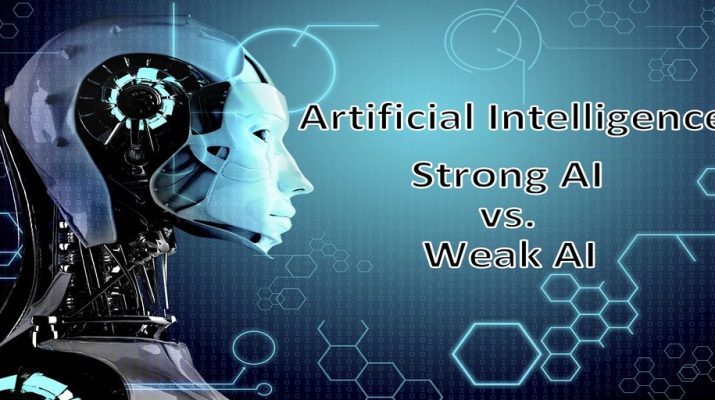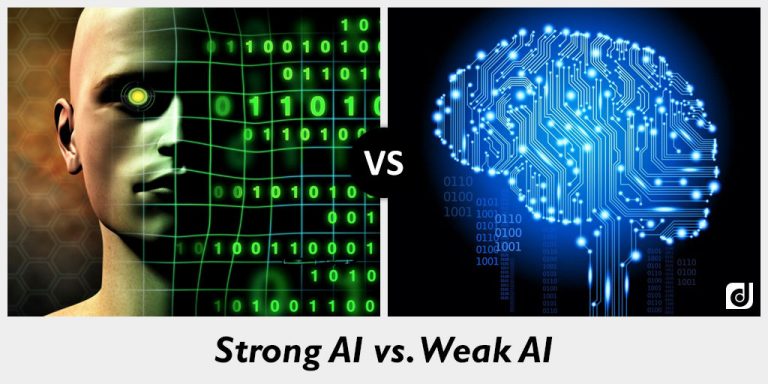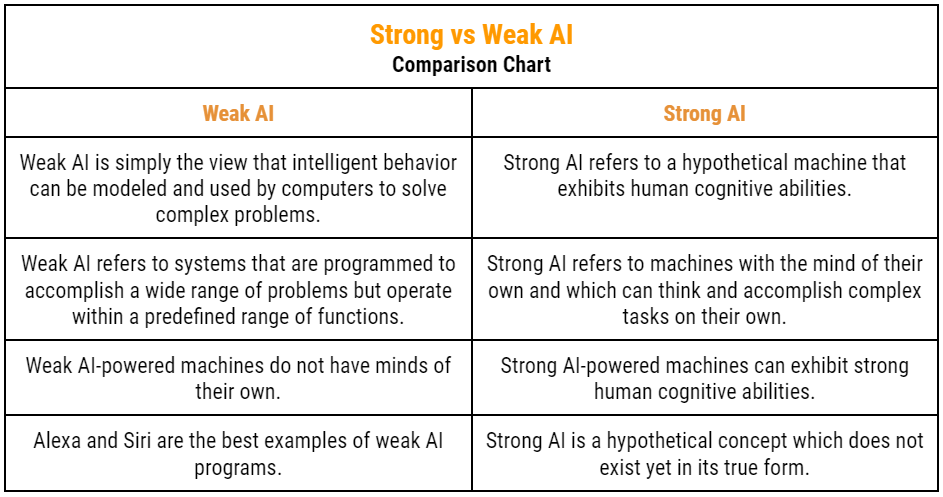Artificial intelligence (AI) has made remarkable strides in recent years, revolutionizing various industries and aspects of our lives. However, despite its impressive capabilities, AI is not without its limitations and weaknesses. These weaknesses stem from the inherent nature of AI systems and the challenges associated with their development and deployment.
This exploration delves into the key vulnerabilities of AI, examining its dependence on data, lack of common sense and reasoning, limited generalizability, explainability and transparency issues, ethical considerations, and security vulnerabilities. Understanding these weaknesses is crucial for responsible development and deployment of AI, ensuring its benefits are realized while mitigating potential risks.
Data Dependence

Artificial intelligence (AI) models are fundamentally reliant on data. They learn patterns and make predictions based on the information they are trained on. This data dependence is a defining characteristic of AI, but it also introduces vulnerabilities and limitations.
Consequences of Biased or Incomplete Training Data
The quality and diversity of training data significantly impact the performance and reliability of AI systems. When data is biased or incomplete, it can lead to AI models that perpetuate existing societal biases or make inaccurate predictions.
Examples of AI Bias
Numerous instances illustrate the potential consequences of biased training data. For example:
- Facial recognition systems have been shown to be less accurate for people of color, potentially due to training datasets with disproportionately fewer images of diverse individuals.
- Hiring algorithms used by some companies have been found to discriminate against candidates from certain demographic groups, reflecting biases present in the data used to train the algorithms.
- Language models trained on large datasets of text may exhibit biases based on the underlying societal prejudices embedded in the data, leading to the generation of discriminatory or offensive language.
Challenges of Ensuring Data Quality and Diversity
Addressing the challenges of data dependence in AI requires a multi-faceted approach, focusing on data quality and diversity:
- Data Collection and Curation:AI developers must prioritize the collection of diverse and representative datasets, ensuring that data is free from biases and reflects the real-world population.
- Data Preprocessing and Cleaning:Techniques for data preprocessing and cleaning can help identify and mitigate biases in training data. This may involve removing irrelevant or biased features, correcting errors, or balancing data representation.
- Data Augmentation:Techniques like data augmentation can help increase the diversity and robustness of training datasets by generating synthetic data that expands the range of representations.
- Continuous Monitoring and Evaluation:Regular monitoring and evaluation of AI systems are crucial to identify and address potential biases that may emerge over time due to changes in data or environmental factors.
Lack of Common Sense and Reasoning

While AI excels in tasks like image recognition, natural language processing, and playing complex games, it struggles with tasks that require common sense and reasoning abilities. This limitation arises from the way AI models are trained on vast datasets, often lacking the nuanced understanding of the world that humans possess.
Limitations in Understanding Complex Concepts
AI systems often struggle to grasp the subtleties of human language and the complexities of real-world situations. For instance, consider the following sentence: “The man went to the bank to get some money.” An AI system might interpret “bank” as a financial institution, missing the possibility that the man could be visiting a river bank.
This highlights the lack of context and common sense reasoning in AI systems.
- AI models are trained on vast datasets, but these datasets often lack the diversity and richness of real-world experiences, limiting their ability to understand complex concepts and nuances.
- Current AI models often rely on statistical correlations and patterns within the data, making them susceptible to biases and errors when faced with situations outside their training data.
- AI systems struggle to generalize knowledge from one domain to another, hindering their ability to apply learned concepts to new situations.
Efforts to Enhance AI Reasoning and Common Sense
Researchers are actively exploring ways to enhance AI reasoning and common sense capabilities. These efforts include:
- Developing AI models that can reason about causal relationships and understand the consequences of actions.
- Integrating common sense knowledge into AI models through techniques like knowledge graphs and symbolic reasoning.
- Training AI models on more diverse and representative datasets, including real-world experiences and human interactions.
- Developing new algorithms that can learn and adapt to new information and situations, allowing AI systems to reason more effectively in dynamic environments.
Limited Generalizability

AI models are often trained on specific datasets and tasks, making them highly specialized. This specialization can lead to limitations when the model is applied to new or different situations. This lack of generalizability is a significant weakness of AI.
Scenarios of Limited Generalizability
AI models trained for specific tasks can struggle when encountering situations outside their training data. For instance, a facial recognition system trained on a dataset of faces from a specific region might perform poorly when applied to individuals from a different region with distinct facial features.
Similarly, a self-driving car trained on urban environments might have difficulty navigating rural areas with different road conditions and traffic patterns.
Overfitting and its Implications for AI Generalization
Overfitting occurs when an AI model learns the training data too well, capturing noise and irrelevant patterns. This leads to poor performance on unseen data. Overfitting can result in models that are highly accurate on the training data but fail to generalize to real-world scenarios.
Strategies for Developing More Generalizable AI Systems
Several strategies can be employed to develop more generalizable AI systems:
- Using Larger and More Diverse Datasets:Training AI models on larger and more diverse datasets can help them learn more generalizable patterns and reduce the risk of overfitting.
- Regularization Techniques:Regularization techniques, such as L1 and L2 regularization, can help prevent overfitting by penalizing complex models. These techniques encourage the model to learn simpler and more generalizable patterns.
- Transfer Learning:Transfer learning involves leveraging knowledge learned from one task to improve performance on another related task. This approach can be particularly useful when data for the target task is limited. For example, a model trained on a large dataset of images can be fine-tuned on a smaller dataset of medical images to improve performance on medical image classification tasks.
- Data Augmentation:Data augmentation techniques can artificially increase the size and diversity of training datasets by creating variations of existing data. This can help models learn more robust and generalizable representations.
- Meta-Learning:Meta-learning aims to train models that can learn to learn. These models can adapt quickly to new tasks and data, improving their generalizability.
Explainability and Transparency

One of the most significant challenges in AI is the lack of transparency and explainability in how AI models reach their decisions. This lack of understanding can lead to mistrust and reluctance to adopt AI in critical applications, especially when the consequences of errors are high.
Opaque Decision-Making Processes
The complexity of many AI models, particularly deep learning models, makes it difficult to understand how they arrive at their conclusions. The decision-making process often involves intricate interactions between millions of parameters, making it challenging to pinpoint the specific factors that contribute to a particular outcome.
- Black Box Models:Deep learning models, especially those with many layers of neural networks, are often referred to as “black box” models because their internal workings are not easily understood. These models can produce accurate predictions, but the reasons behind those predictions are not always clear.
- Image Recognition:In image recognition tasks, AI models might classify an image correctly but fail to provide insights into the features that led to the classification. For instance, a model might correctly identify a dog in an image, but it’s unclear which specific features (e.g., fur, ears, tail) were most influential in the decision.
- Medical Diagnosis:In healthcare, AI models are increasingly used for disease diagnosis. However, the opacity of these models can raise concerns about the reliability of their predictions. It’s crucial to understand why an AI model diagnoses a patient with a specific condition, especially when the decision has life-altering implications.
Importance of Transparency and Explainability
Transparency and explainability are crucial for building trust in AI systems.
- Accountability and Trust:When AI systems make decisions that have significant consequences, it’s essential to understand the reasoning behind those decisions. This allows for accountability and helps build trust in the system. If the decision-making process is opaque, it can be difficult to identify and correct biases or errors.
- Regulation and Compliance:In industries like finance and healthcare, where regulations are strict, AI systems need to be transparent and explainable. This allows regulators to assess the fairness, reliability, and ethical implications of these systems.
- User Acceptance:Users are more likely to trust and accept AI systems if they understand how the systems work and how their decisions are made. Explainability can enhance user confidence and promote wider adoption of AI technology.
Concluding Remarks

In conclusion, while AI holds immense potential to transform our world, acknowledging its weaknesses is essential for responsible development and deployment. By addressing these limitations, we can harness the power of AI to create a future that is both innovative and ethical.
Continued research and development are crucial to enhance AI’s capabilities, mitigate its vulnerabilities, and ensure its alignment with human values and societal well-being.
FAQ Explained
What are some real-world examples of AI bias?
Examples include facial recognition systems that misidentify people of color, loan approval algorithms that discriminate against certain demographics, and hiring tools that favor candidates from specific backgrounds.
How can AI systems be made more secure?
Methods include adversarial training, data sanitization, and robust model design. Secure development practices and continuous monitoring are also crucial.
What are the ethical implications of AI job displacement?
This raises concerns about economic inequality, workforce retraining, and the need for social safety nets to support individuals affected by automation.
